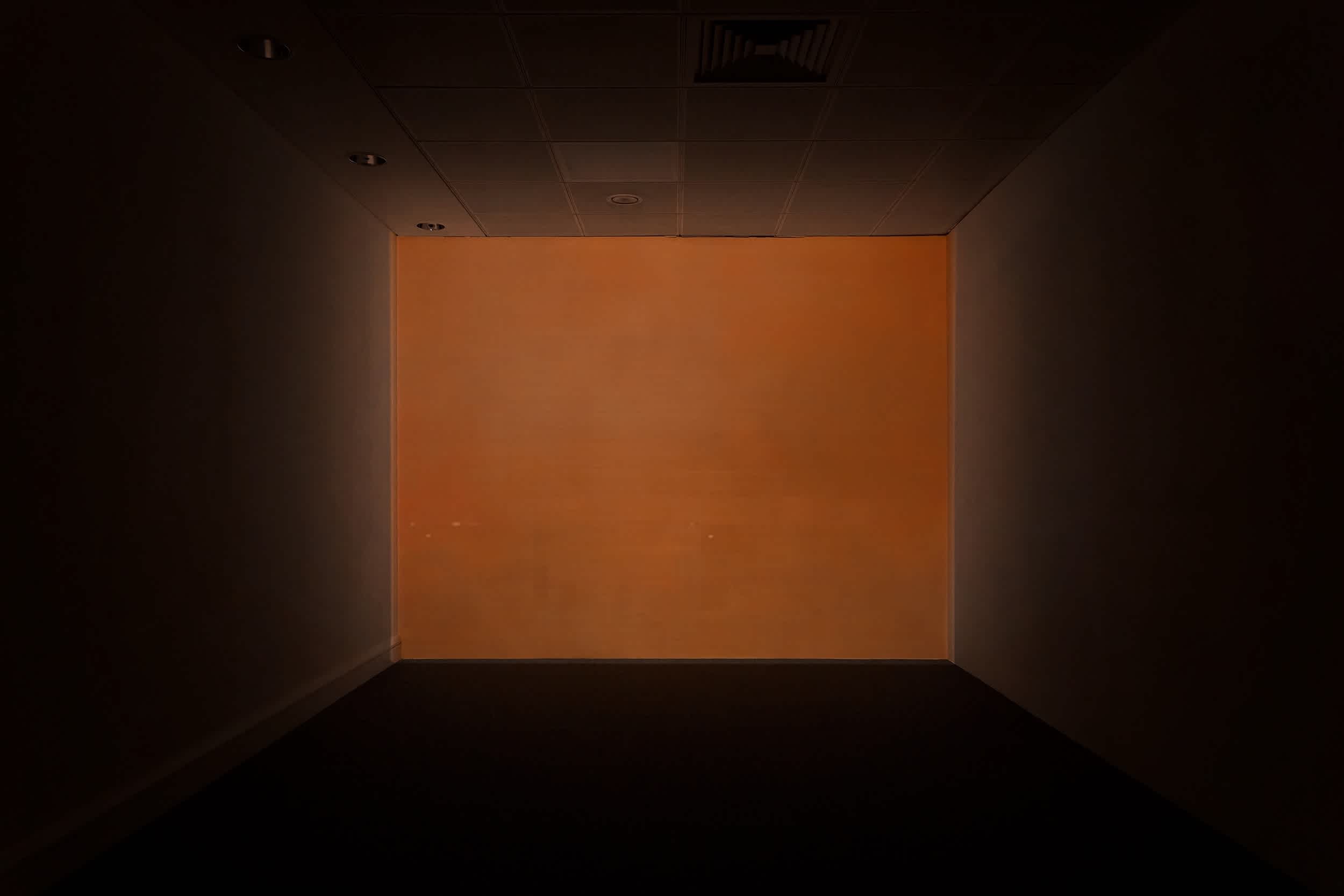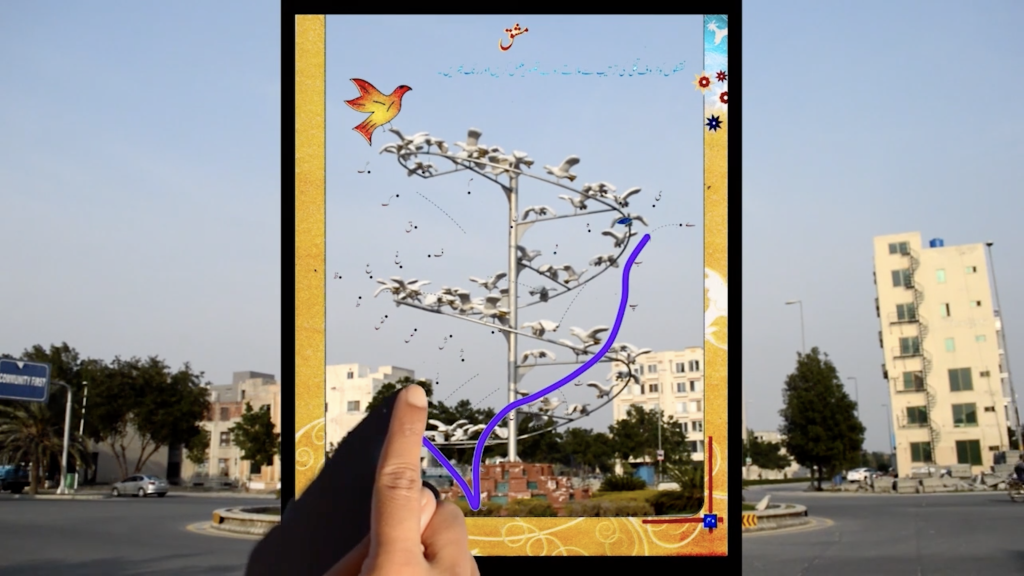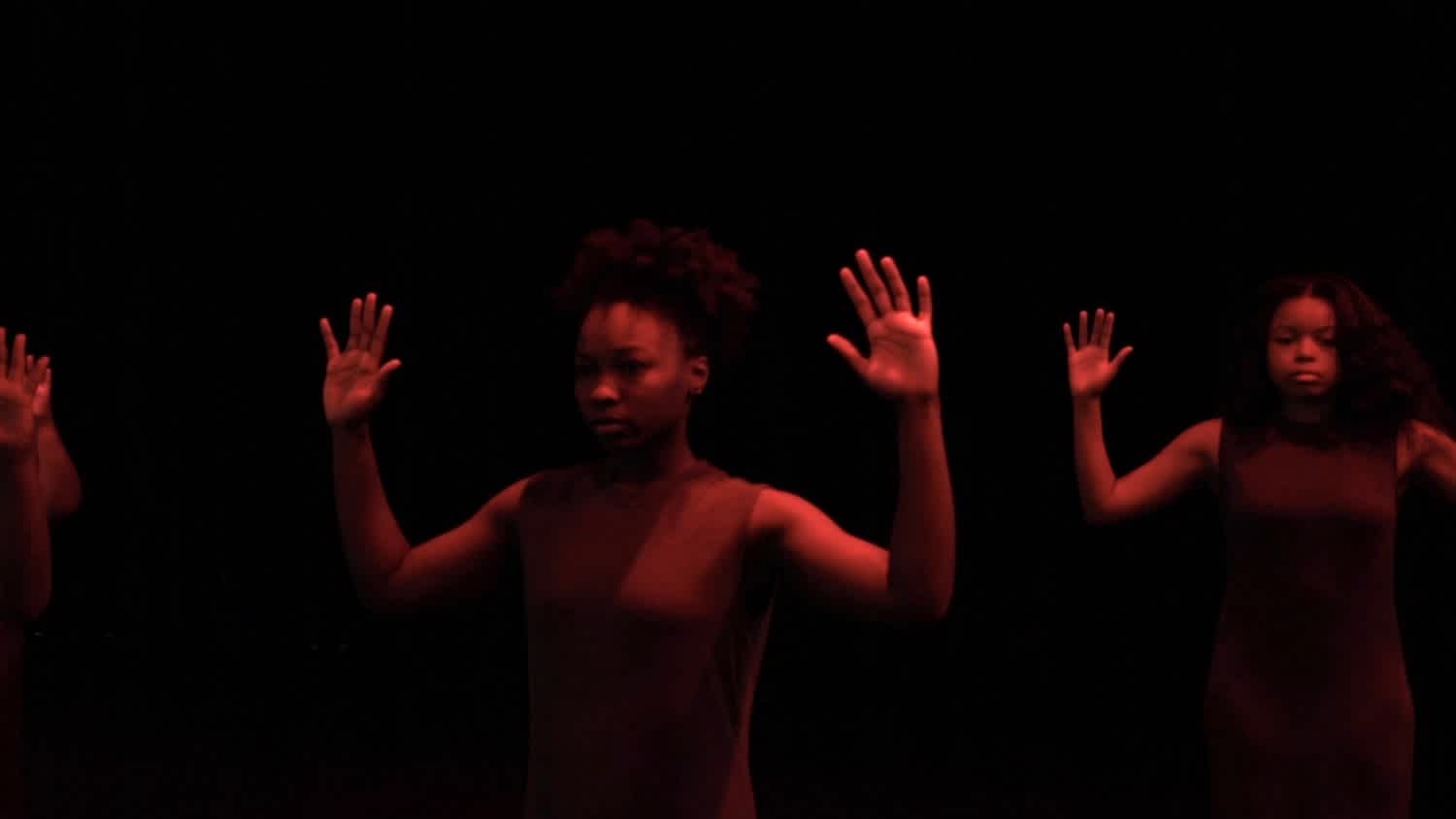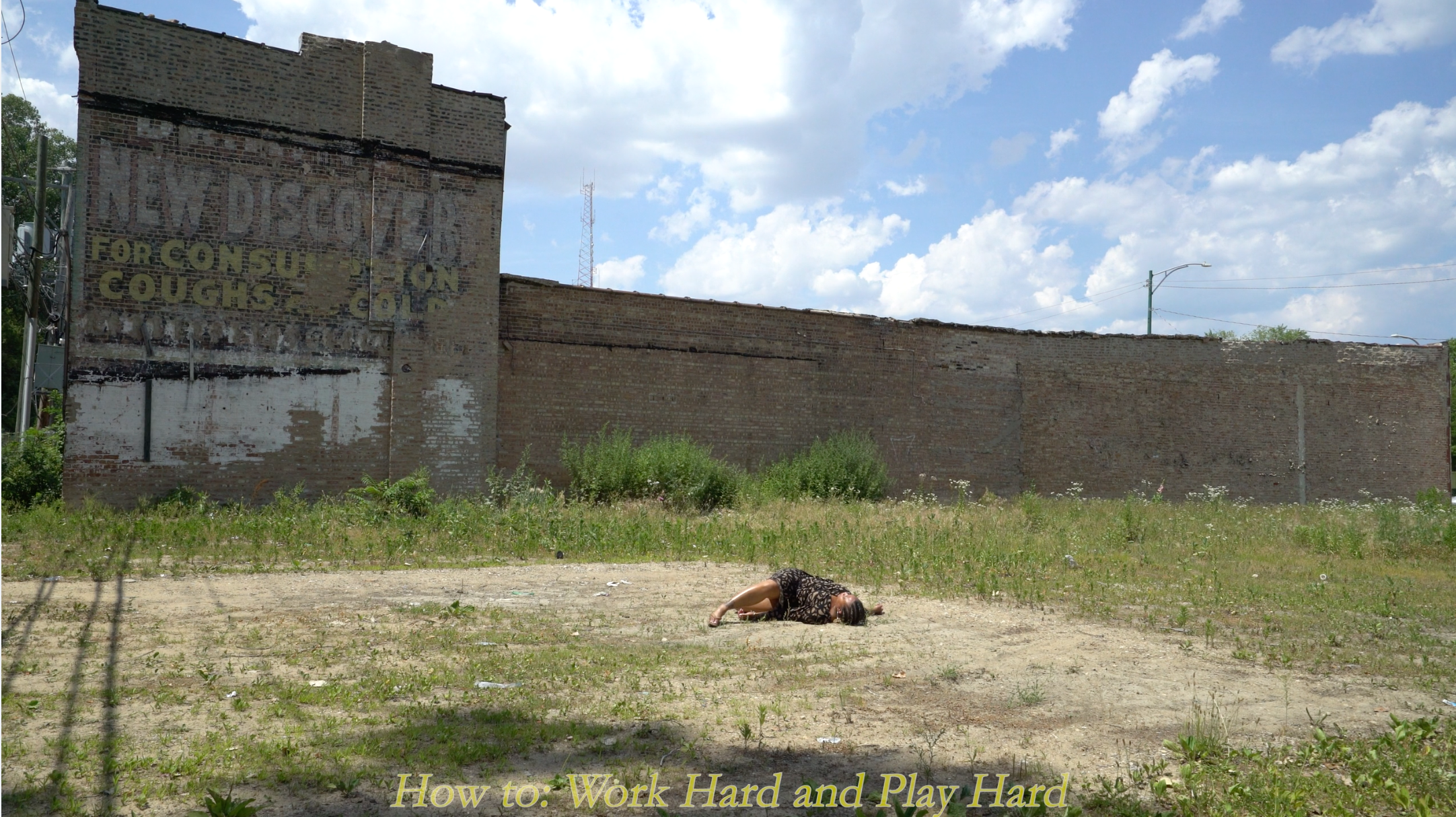
On View: April 18
This Video Viewing Room featured Rhea Dillon’s (Working Title) Browning 2025 (2021), along with contextualizing texts and a response to the video written by 2021–2022 Curatorial Fellow Sienna Fekete. The video was available to view until August 25, 2022.
This presentation is organized by Sienna Fekete, 2021–2022 Curatorial Fellow.
Rhea Dillon’s (Working Title) Browning 2025 (2021) is a rumination on the desire to work through black brown and brown black experience, where the artist denotes Blackness as a construct of societal existence, and brownness as the intrinsic truth. The artist’s use of “black” in the lower case refers to descendants of Africa. Capital B “Blackness” is how she names the political category that is posited and framed via the West.
In Dillon’s words: “Brownness is what blackness is. It’s the ontic. I am brown before I am black. From birth till the end, my skin is brown. Therefore I bring brown into my practice as a theory devised to bring the ontic in black ontology back to the forefront.”

(Working Title) Browning 2025 immediately struck me. The film has an underwater quality—like a Drexciyan choral hum of Black noise, tonal & reminiscent of the sea. [1] Dialectical echoes of “Grateful to be a dark shade of brown…really grateful for the skin” & “You know they have a brown heart [emoji] now?!” & “Brown is an everyday celebration” & “Brown is earth before life” & “Brown is as hard or soft as it wants to be” & “Brown invites specificity” reverberating through my headphones. This is the expansiveness of brown: a hazy, continuous sonic stream of consciousness–reflecting ritualistically, spiritually, soulfully on the color brown. But not really just on the color brown, of course: we’re talking about the historical, colonized, oral-history keeping, perseverance of brown. Rhea is British so writes “colour,” which makes me see the work through a sharpened, diasporic lens–the extra “u” rolling around my mouth as I pronounce it. Watching this fuzzy, hypnotic, solid screen urges the viewer to really listen. Deep listening. Inside-the-film type listening. Hearing the voices of the artist’s friends and collaborators–Dachi Cole, Yves B. Golden, John Glacier, Ra Malika Imhotep, Kandis Williams, Sydney Vernon, Mandy Harris Williams, and TWEAKS–makes me feel closer to them. The rasp of the voice, the texture, the cadence, the pacing, the pronunciation, the choral reverberation, the blurriness of brown & Black & in the artist's words, “both entities circulate and reflect each other in their mutability.”
This film centers the notion of being perceived/not being perceived. It challenges questions of visibility & self-preservation. I’ve always thought people speak most honestly when not oppressively & aggressively “perceived” but still deeply heard–able to access parts of themselves & their untold histories without the physical performance of being. This piece exists as a meditation on the construct of societal existence, both within the proverbial container & on one’s own terms. I recognize the voice of Mandy Harris Williams who actively explores questions of “Who is what per their phenotype–perceived whiteness via their phenotype–otherwise known as the physical expression of genes.” She continues on by asking the listener, “How are we both brown & how are we both not brown?” These sonic statements of questioning & reflection harmonize to reveal a bigger crescendo of truth. It simultaneously feels like a sermon, a poethic ritual, a manifesto, a cypher, a call & response, a stream of consciousness, an audio diary, a soundscape & a reckoning.
At twenty-eight minutes long, the work pulls us through the screen into its realm. A realm of listening & not speaking. I love the durational quality of the film. It commands your presence & keeps you there closely listening, like the communal bobbing of bodies at a concert. Each audio recording is distinct yet in dialogue with one another–building a blueprint of linguistic knowing & perhaps of re-articulation, redefinition. This work left me feeling connected to all the voices I heard so intimately in my ear, channeling that of a distant Black planet in the spirit of Fingers Inc. & Larry Heard. [2]
Through (Working Title) Browning 2025 & her overall artistic practice, Rhea examines and abstracts what she thinks of as the “rules of representation” as a means of undermining contemporary Western culture, seeking to continually question what constitutes the ontology of Blackness versus the ontic. This idea of the “rules of representation” intrigues me. It’s a construct that we societally uphold on a regular basis–both consciously and subconsciously. Actively & passively. At the root of the work, I recognize a longing for a world that operates on its own rules–an evolved, caring world that we define collectively, colloquially & with intention. The slippages that occur in between spaces of rupture, apocalypse & re-imagining. What would it mean if we listened, and in that moment of stillness, we heard the future calling.
— Sienna Fekete, 2021-22 Curatorial Fellow
Allowing for new interpretations of being, Dillon is committed to expanding her work via dialogue and collaboration. As an extension to this practice, Dillon’s initial goal for the Video Viewing Room presentation was to shape the possibility of having multiple entry-points to guide reflection. The artist set forward an exercise wherein two lived experiences and personal reflections collide and exchange, which manifested as Dillon’s calling for two distinct responses: one from a Black writer, and another from a white writer. Dillon wanted these different, distinctive lenses to contextualize and reflect upon themselves in the reality of the postcolonial capitalocene that we live in—the current geological age, viewed as the period during which human activity has been the dominant influence on climate and the environment—via an anchoring in and expansion of the work presented in the Video Viewing Room. For the artist, this praxis represents an ontic response to an ontology of Blackness–an attempt to reconcile the seeming paradox of a fact-based experience within a metaphysical category.
Over the course of putting this multilayered work together, what occurred was a decision from the white writer to retract their writing after completing their essay response. This in itself lends a window into the reality of the complex modes of exchange and discourse that present themselves through race both in and beyond the art world.
Through this presentation, Dillon would like the reader to consider how the piece might be interpreted if read through multiple lenses, and how the readership might shift given lived experience(s). Even though this presentation provides only one written reflection, to what extent does it do the work of encouraging the viewer to bring their own vision to the work and to engage with the video across distinct lived perspectives?
The essay that appears above is by Sienna Fekete, the 2021–2022 Curatorial Fellow at The Kitchen and organizer of this edition of Video Viewing Room. Fekete’s work focuses on making connections between sonic archives/music as it relates to Blackness, community-based initiatives, economies of collaboration, and education as a tool for futurity. Dillon invited Fekete to respond to the work (Working Title) Browning 2025 through the lens of her own lived experience of Blackness.
BIOS
Rhea Dillon is an artist, writer, and poet based in London. Through her practice, she examines and abstracts her intrigue of the “rules of representation” as a device to undermine contemporary Western culture and seeks to continually question what constitutes as the ontology of Blackness versus the ontic.Select recent exhibitions include Nonbody Nonthing No Thing at V.O. Curations, London; Catgut at The Serpentine Gallery Park Nights, London; Governmental Fires at Futura, Prague; Janus at Soft Opening, London; and Uchronia et Uchromia at External Pages, Net Artwork. Her first book of poetry and texts titled Donald Dahmer published by V.O. Print is available from V.O. Curations and Dover Street Market in London and from Printed Matter in New York.
Sienna Fekete is the Curatorial Fellow at The Kitchen and organizer of this edition of VVR. Fekete’s work focuses on making connections between sonic archives/music as it relates to Blackness, community-based initiatives, economies of collaboration, and education as a tool for futurity. Fekete was invited by Dillon to respond as a Black person to the artist’s work. Fekete’s response draws out the complex dynamics across these intersections.
CREDITS & FOONOTES
Footnotes: [1] Drexciya was the electronic music duo of James Stinson and Gerald Donald. The duo “eschewed media attention and its attendant focus on personality, [ by developing] developed a nautical afrofuturist myth. The group revealed in the sleeve notes to their 1997 album The Quest that “Drexciya” was an underwater country populated by the unborn children of pregnant African women who were thrown off of slave ships; the babies had adapted to breathe underwater in their mothers' wombs. The myth was built partly on Paul Gilroy's The Black Atlantic: Modernity and Double Consciousness (1993), according to Kodwo Eshun.” (“Drexciya, Wikipedia, https://en.wikipedia.org/wiki/Drexciya.) [2] See the lyrics to the Fingers Inc. song “Distant Planet” here: https://genius.com/Fingers-inc-distant-planet-lyrics


